
Shoes get scratched and scuffed with wear. They need to be polished regularly if they are to continue to look good. But shoe polish may contain products dangerous to one's health. Over-the-counter shoe polish may contain such carcinogens as nitrobenzene, trichloroethylene and methylene chloride. Natural alternatives to store-bought shoe polish can be devised from common household items.
Cloth
Shoes that are scratched, scuffed or dirty first need to be cleaned. Use a damp cloth to remove the mud, dirt or dust from the surface of the shoe. Then use a dry, lint-free cloth to polish the surface. For more stubborn dirt or stains, use a gum eraser or even not-too-abrasive sandpaper to remove mud, gum or whatever else has attached itself to your shoes. After you've been outside, dust or clean off your shoes before putting them away. This preserves the finish on the shoes.
Oil
If a simple cleaning with a lint-free cloth isn't sufficient, use beeswax, walnut, olive or vegetable oil on a dry, lint-free cloth to polish the shoes. Rub in the oil firmly until it is fully absorbed. The oil will leave the shoes looking like they've had a nice polish. Be sure not to overuse the oil. You don't want oil dripping over everything, causing a mess and making cleanup hazardous.
Petroleum Jelly
Use petroleum jelly on leather or patent leather shoes. Using a clean, lint-free cloth, add petroleum jelly in small amounts and thoroughly rub in until you cover the entire surface of each shoe. Petroleum jelly softens the leather and prevents it from cracking, especially in colder weather. Do not use petroleum jelly on suede or rawhide leather shoes.
Vinegar and Lemon
A solution of vinegar mixed with water can remove water stains from leather shoes. Vinegar also provides a nice polish for patent leather shoes, though a vinegar solution may somewhat alter their color. Lemon juice can also be rubbed into dark-colored shoes. Afterward, for a shine, buff with a clean, white, lint-free cloth.
Nontoxic Permanent Marker
Most of the time, shoes will need more than a quick damp-cloth cleanup. They need color restored. Using a nontoxic permanent marker with a wide tip, you can “polish” your shoes and restore the black or brown color.
Banana Peel
Bananas may be for eating, but a banana peel has other purposes. Using the inside of a banana peel, polish your shoes. Then buff for a nice shine.
Related Articles
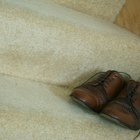
How to Make Organic Shoe Polish

How to Waterproof Leather Soles

How to Revitalize Leather Shoes

How to Clean Mold Off Leather Shoes

How to Take Care of a Hush Puppies Shoe

Can You Waterproof Light Nubuck Shoes?
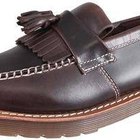
How to Clean Dr. Martens Shoes

How to Care for Patent Leather Shoes

How to Shine Shoes With Household ...

Uses for Shoe Polish

How to Keep Sperrys From Creasing

How to Treat Leather Boots With ...

Mink Oil vs. Shoe Polish
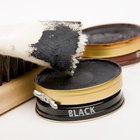
How to Restore Dried Out Shoe Polish on ...

How to Make a Cucumber & Sugar Facial ...
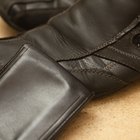
How to Use Neatsfoot Oil
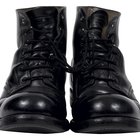
How to Get Rid of a Stinky Shoe Smell ...

Substitutes for Groundnut Oil in Cooking
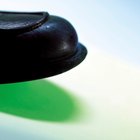
How to Polish Bass Weejuns

Mink Oil vs. Shoe Polish
References
Writer Bio
Carolyn Scheidies has been writing professionally since 1994. She writes a column for the “Kearney Hub” and her latest book is “From the Ashes.” She holds a Bachelor of Science in journalism from the University of Nebraska at Kearney, where she has also lectured in the media department.
Photo Credits
black shoes image by timur1970 from Fotolia.com